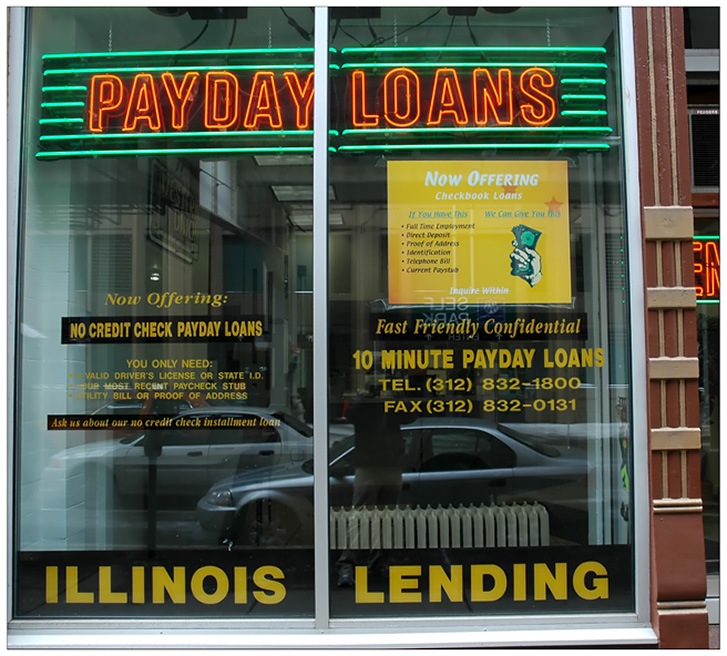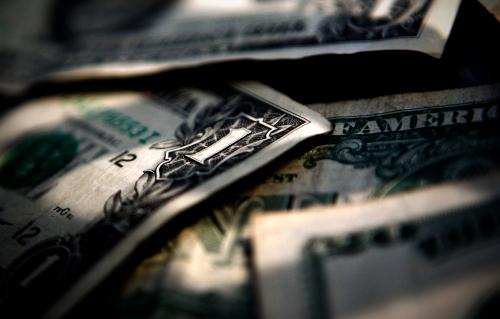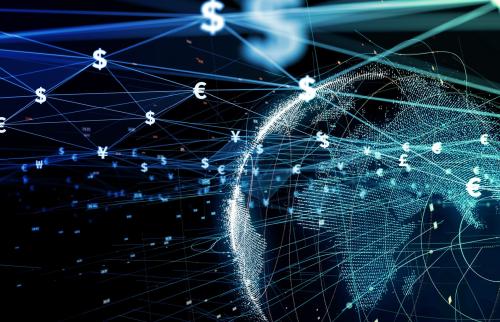On May 18 the Consumer Financial Protection Bureau (CFPB) announced a hearing, schedule for June 2, at which it will likely release its long-anticipated proposed rule on the regulation of small dollar credit, often referred to as payday lending. This comes on the heels of Google’s announcement last week that it would no longer allow certain types of “deceptive financial products” for short-term small dollar loans to be advertised on its site using Google AdWords. Google follows Facebook’s earlier decision to do the same. Change in how small-dollar credit is regulated is coming.
The Bureau’s rule will be the first time federal regulation has been instituted on this product—a landmark victory for consumer advocates who have long opposed such lending that routinely carries interest rates of 300-400 percent on an annualized basis. On the other side, industry advocates have expressed concern that this regulation will sharply curtail availability of small-dollar credit to consumers who use the product, have limited alternatives to borrow money, and are often ineligible for more conventional loans with lower rates.
There is no denying that with stagnant real wages and a choppy economy, millions of Americans are living paycheck to paycheck with little to no safety net to guard against the unexpected. This generates tremendous demand for small dollar loans with funds available quickly. However, the people in need are highly vulnerable and some products and practices in this non-federally regulated space can cause far more harm than good, trapping consumers in a never ending cycle of debt. It can be especially challenging for those who have never personally (or through family or close friends) directly experienced this market to fully understand the problem and products involved. For example, every payday loan is made to a person who has a bank account—it is not a product that the ‘un-banked’ are eligible for.
It can be especially challenging for those who have never personally (or through family or close friends) directly experienced this market to fully understand the problem and products involved.
This paper lays out a framework for thinking more broadly about these issues, calling attention to specific details that may escape first analysis. The goals are simple: defining the consumer, discussing the marketplace, delving into the role of technology, and lastly, looking at regulation and the role of regulators.
Who is a non-prime consumer? How do markets think about them?
Payday lending is one part of a broader category of financial services that are provided to non-prime consumers. The term ‘sub-prime’ made famous by the un- and under-regulated mortgages that began under that moniker and grew to include a wide suite of other non-prime consumers that became the underlying instruments behind the 2007 financial meltdown (Alt-A, Liar Loans, No Doc loans, Ninja loans, etc.). The broader, less pejorative term ‘non-prime’ is coming into vogue as the financial system continues to try to serve these consumers.
It is interesting to note that the term ‘non-prime’ is a negative definition. Simply put, it is the group of consumers who are defined not to be ‘prime.’ Prime consumers are those whose credit history, income stream, and other aspects of life fit an easily categorized box. They have long, documented, experiences with steady income, having credit available, using that credit, and generally using it well. Sure, you can have a blemish or two and still be prime.
Non-prime is everyone else. In fact, the majority of Americans are actually non-prime according to research done by the Corporation for Economic Development. It is ironic that the majority is defined by being not in the minority; who refers to students as ‘Not-Straight A’s’? Non-prime people can be divided into many different categories: young, limited credit experience, bad credit history, variable- and difficult-to-document income, those who had single major credit problems (usually driven by a medical problem or a divorce), etc.
It is ironic that the majority is defined by being not in the minority; who refers to students as ‘Not-Straight A’s’?… A more accurate framework may be to think of prime people as ‘easy to model’ and non-prime as ‘hard to model.’
I propose two different ways to categorize them: The Insolvent and the Illiquid.
The Illiquid are those who have a problem accessing current or future earnings or wealth and need credit to bridge this time gap. Economists (and I am one) are generally very bad at thinking about illiquidity. Traditional economics “assumes” this problem away, quite literally, in terms of the lifetime income smoothing consumption functions taught in Econ 101. It takes a lot of math and modeling to begin to address simple forms of illiquidity in personal behavior and even then one tends to have highly specialized assumptions about the reasons why people are illiquid and what is available to treat the problem. A more accurate framework may be to think of prime people as ‘easy to model’ and non-prime as ‘hard to model.’
Why do non-prime people become illiquid? The assumption that was often stated was a surprise expense. The often repeated story was that their car broke down and they needed $500 in repairs. Given that most non-prime people don’t have $500 they can access for an emergency,[1] they had a liquidity problem. (Hold aside the fact that the majority of Americans, including many prime consumers, lack access to $2,000 in savings, which is needed for many medical, home repair, or even some auto emergencies).[2] Without fixing their car, they would not be able to get to work, resulting potentially in job loss/not being able to pick up their kids, etc. So they are willing to pay almost anything to have access to the money to fix their car. The pressing level of need and the substantial ramifications of not being able to bridge the liquidity gap help explain why consumers are willing to enter into high fee and interest arrangements to access small dollar credit quickly.
While this does happen, it is not the main driver of illiquidity. Research shows that only about one in six cases of sudden illiquidity is driven by an unforeseen expense. The main driver of illiquidity is actually unforeseen income shocks. Income is extremely volatile, especially for working-class individuals and families. Research from the JPMorgan Chase Institute on over 6 million of their customers shows that, “On average, individuals experienced a 40 percent change in total income on a month-to-month basis.”[3] Stable incomes are actually the rare exception, as that same study found that 13 out of every 14 people have income fluctuations of over 5 percent on a monthly basis. For a family that’s budgeting and practicing good financial health, a 5 percent income fluctuation is huge—in fact, it’s larger than the normal household savings rate. For someone living paycheck to paycheck, trying to make ends meet, 5 percent is enough to tip you over the edge.
These fluctuations in income are not driven by job loss, or even job change, although again that does happen. It is a change in the amount or timing of income. Sixty percent of jobs are paid on an hourly basis, according to the Bureau of Labor Statistics. About half of those working those jobs wish that they could work more hours, which is indicative of higher demand for income. Also consider that many people often derive income from multiple jobs: a desk job during the week, with a side business on the weekend—also seasonally picking something up. Think about snow storms in the Northeast from the perspective of non-salaried workers: home cleaners lost several days of income that they will not get back, but the guys who plowed the street and shoveled drive-ways made a killing. There are ups and downs in income, but it is the unexpected downs that cause illiquidity.
Research from the Center for Financial Strategy Innovation (CFSI) showed huge variance in income on an annual, monthly and weekly basis for real families: “Families typically experienced almost three months when their incomes fell at least 25 percent below their average income.”[4] There are many reasons why this happens: alimony and child support checks that were late; payrolls that usually come in on Thursday missing a little time due to a holiday or someone being sick, and hence coming in on Monday, etc.
If the driver of illiquidity is mismatched income streams and not expenses, then the policy and regulatory framework needs to respond appropriately. Traditional tools used for underwriting and regulation, such as Debt-to-Income ratios, should be viewed far more skeptically. Expectations about the ability and timing of a consumer to repay should be thought of differently. New products and technology used to better serve these customers must likewise be rethought. However, the different root cause of instability of income does not ameliorate the borrower’s need for the credit. This remains unaffected, as the outcome of not paying bills can be as severe regardless of whether it is an unexpected expense or shock to income: fixing the car or paying the rent or day care are all must-dos.
Besides the Illiquid, there are the Insolvent. These borrowers are not very likely to repay loans, but it is more than that. They are in the midst of a downward spiral in their financial life for many possible reasons, likely driven by medical issues, divorce, or other family problem. The insolvent borrower will continue to go down the credit spectrum accessing whatever funds he or she can to postpone the day of reckoning. They may be purposefully conning the lender or simply doing what many failing businesses due—the interests of equity and debt holders sharply diverge and equity will take bigger and bigger risks on smaller and smaller chances of pulling a rabbit out of a hat. Eventually this borrower will go through bankruptcy, default on most of his or her obligations, lose access to their bank account, and have a long and difficult road back. For the purpose of any small dollar, short or medium term loan, the Insolvent will eventually, in almost all likelihood, default.
The lender’s goal is to distinguish between the Insolvent and the lliquid—that’s frankly good business sense for responsible lenders. Put another way, if there is a product where the lender doesn’t care whether it can distinguish between the Illiquid and the Insolvent, it is a problematic product. That’s as true in the mortgage market as small-dollar credit, which is why some products are simply not fit to be sold and should not be available under any circumstances. A test should be whether the lender is dependent on the repayment of the borrower in order to make a profit. If the lender stands to make a profit regardless of whether the borrower will repay (or more than likely will profit) then you have a predatory product. Regulators need to think along these lines and be willing to ban outright or functionally curtail these types of predatory products.
This definition does not negate the need for small dollar lending. Products can be both predatory and fill a need in some segment of society. The question is whether the marketplace can provide responsible, non-predatory products that serve most of that need, and in doing so, better distinguish between the Illiquid and the Insolvent. Lending, particularly when underwriting risky credits, can be a volume based business.
This definition does not negate the need for small dollar lending. Products can be both predatory and fill a need in some segment of society. The question is whether the marketplace can provide responsible, non-predatory products that serve most of that need, and in doing so, better distinguish between the Illiquid and the Insolvent.
While greater volume can lead to economies of scale, it is important to distinguish between volume generated by Illiquid and Insolvent borrowers. Policymakers ought to reject arguments that rely on the volume of business generated by serving the Insolvent as necessary to keep products that benefit the Illiquid. However, policies that shut off credit to the Illiquid, in the name of protecting the Insolvent, are also problematic. This is very challenging as most loans experience some percentage of default even to borrowers who are reasonably likely to repay.
How do payday loans fit into the broader marketplace for the non-prime consumer?
There needs to be a focus on what real world, non-prime consumers can do to deal with illiquidity and uncertainty of income. First, consumers can and do delay payment of various obligations, sometimes called using ‘the float.’ This includes being late on bills (cell phone, electric, gas, internet, cable, etc.), mortgage or rent, car payment, or individual obligations. Often there is a grace period and then a late fee. If the consumer pushes this too far, service is abruptly cut off and re-establishing service can range from mildly to extremely expensive.
Another simple form of providing temporary liquidity in today’s world is using a credit card. In exchange, they provide the consumer a fair amount of liquidity—delayed repayment, including sometimes zero interest for 30 days, and interest in the range of 15-35 percent when they begin, with a relaxed and flexible repayment schedule that the consumer can set. The flip side of that flexible and relaxed repayment schedule is that consumers who pay only the minimum payment are paying down a very small portion of their principal (often in the range of 1 to 3 percent)[5] and hence it could take as long to pay-off a credit card as a mortgage, if paying only the minimum amount.
Credit cards available to non-prime consumers often have very different terms and conditions from those that prime consumers hold. For example, the Milestone Gold Card for non-prime consumers offers a $300 maximum line of credit with a $35 annual fee, charged on your first statement, a 24 percent interest rate (rising to 30 percent if you ever make a single late payment), a $25 fee for any additional authorized user, a $37 fee for late payment, and a $35 fee for any over-limit transaction.[6] If the flat fees do not appear too large at first, recall this is for a $300 maximum line of credit. The average line of credit for brand new credit cards for prime customers is over $5,000 and for the so-called ‘super prime’ it is over $9,500.[7]
Yet, given variable income as the source of much of the problem, variable repayments are highly useful for non-prime illiquid consumers.
Going down the spectrum, illiquid non-prime consumers have other alternatives: pawn shops, loans from friends or family, or short-term credit in the form of payday loans or longer-term installment loans. Payday loans are provided by non-bank credit providers to consumers who have bank accounts and a proof of a source of income.
It is a common misperception that payday borrowers are un-banked, in fact it is the exact opposite, only those with bank accounts can get a payday loan. Beyond having bank accounts, approximately one-third of payday borrowers are homeowners and more than half have graduated or attended college.[8] In this loan, the borrower provides the lender with a post-dated check as collateral and receives their money up-front—hence the term ‘payday.’ This can bridge liquidity problems of Illiquid borrowers. It can also create another source of short-term funding for the Insolvent who while headed toward default have the opportunity to tap into future earnings to postpone the day of reckoning. Finally, if a product is too costly and a borrower is on the edge between Illiquid and Insolvent, the repeated use of a payday loan can itself drive that consumer from being Illiquid into becoming Insolvent.
It is a common misperception that payday borrowers are un-banked, in fact it is the exact opposite, only those with bank accounts can get a payday loan. Beyond having bank accounts, approximately one-third of payday borrowers are homeowners and more than half have graduated or attended college.
In general, the prime borrower experiences credit totally differently than the non-prime borrower. They have access to: credit cards that compete for your business with high limits, lower fees, and enticing rewards in the form of cash or loyalty points that can be converted to purchase goods; lines of credit from banks; and assets that can be more easily liquidified if needed to deal with a major unforeseen expense.[9]
An important distinction in the marketplace has to do with bank products and non-bank products. This difference exists for a variety of reasons, but foremost is that banks have special relationships with the government. To start with, banks are chartered by the government. A charter is very different from a license, which is permission to do something and you can generally continue to do it unless you spectacularly screw up—drive, hunt, cut hair, even practice medicine. A charter involves an ongoing grant of authority from the state with an expectation that it will last almost infinitely. Licenses have to be renewed. Charters can only be revoked. Chartered institutions like banks and credit unions are subject to deep and comprehensive regulatory regimes in exchange for all of the benefits of a charter. The government guarantees customers access to their money up to $250,000 from the FDIC and guarantees the institutions access to liquidity in the form of the Federal Reserve, as long as the bank is in reasonable health with decent assets.
However, the difference in services banks provide as compared to non-banks is not always so clear. Over time this difference has changed so that non-banks provide lots of services that used to be the provision only of banks. The line has blurred and will continue to due to technology, innovation, and customer preference.
How new technologies for financial products harm non-prime consumers but benefit prime consumers
The idea of prime and non-prime is really a function of technology. Originally all lending was relationship-based. It was not until technology progressed enough data to allow for information to be created, processed, saved, accessed, and manipulated at a cost-effective rate that lenders would be willing and able to lend to people with whom they had no relationship.
The radical increase in computing power has affected every level of this process:
- Data is created on the basis of things that people never thought of before—social networks, type of appliance used;
- Processing speed is one thing we all know, but processing location is the far more important innovation;
- It is accessed by people and everywhere; and
- Manipulated by everyone!
The effect of technology has been to lower the costs and increase the benefits for prime consumers. It is awesome to be able to use Apple Pay, to send money to friends via Paypal, and to user Uber. These things make a lot of prime consumers’ lives better, quicker, cheaper, and more convenient.
But for those who don’t fit into the nice box of prime consumer who have enjoyed technology’s benefits, the opposite is often true. As prime customers segregate themselves into other realms of financial transactions, non-prime consumers are often left holding the bag. They have to pay for the things that prime people think are free (checking accounts), or pay more for the same service (taxis instead of Uber, non-EZ pass lanes).
This system is becoming more regressive as benefits continue to be assigned to new platforms that are dependent upon having certain types of financial services, such as bank accounts and credit cards. For example, the toll rate to pay in cash to cross the George Washington Bridge into New York City is $15, while the EZPass rate is $12.50 (rush hour) and $10.50 (non-rush hour). Beyond being more expensive, requiring automatic transponders to even access certain toll roads—a growing trend in U.S. transportation—can simply exclude an entire category of person who is ineligible to even use that road because they lack the financial service instrument required.
The payment system used today is broadly regressive. Wealthier and prime consumers earn benefits from using certain forms of payment, while non-prime consumers pay more, often directly subsidizing prime customers. Prices for goods are generally constant regardless of the form of payment accepted. However, when credit cards are used the merchant pays a fee anywhere from 1 to 3 percent to the credit card company, and often more in additional fees to various processors along the way. For prime consumers, credit card companies provide a certain amount of that back in the form of rewards (1 percent cash back, frequent flier points, etc.). There are smaller fees and smaller (or no rewards) for those who use debit cards.
The payment system used today is broadly regressive. Wealthier and prime consumers earn benefits from using certain forms of payment, while non-prime consumers pay more, often directly subsidizing prime customers.
Those who use non-prime cards or cash receive no such benefit. While 1 percent might not seem like much, consider that for someone spending $10,000 a year, it amounts to $100. However, for someone spending $50,000 a year that becomes $500. The payment system is providing $500 (tax free) in benefits to the wealthier prime consumer and zero back to the non-prime consumer. Customers that are wealthier typically get higher percentages back through exclusive offers in the form of more cash back or reward points easily converted into consumption (e.g. platinum cards).
Challenges in creating regulatory standards around payday and small dollar loans
There is a big debate around the right interest rate to charge: 36 percent has somehow become the top acceptable ‘moral rate.’ This is an old argument, as old as recorded history. Much is made of the fact that the Bible contains several passages discussing the sins associated with various forms of interest being charged to different people. The three main mentions of this are in Exodus, Leviticus and Deuteronomy.[10]
It is interesting that according to some, the actual Hebrew words used to in the Bible for interest is neshekh (Exodus and Deuteronomy) but in the levitical text, it occurs alongside tarbit or marbit. In the Jewish Publication Society translation (1962) neshekh is rendered as ‘advance interest’ and tarbit or marbit as ‘accrued interest’[11]—the one being deducted in advance, the other being added at the time of repayment. This passage shows that discussions about the proper level of interest, what form it takes, and how moral it is, have been debated since biblical times. The Bible even gets into what today we’d consider both the upfront fees and annual percentage rates.
The challenge for today’s regulators lies in putting together these different realities into a suitable framework that provides the right balance of consumer protection, market innovation, and financial intermediation—no easy task. There will be vigorous debate about how regulators, particularly the newly-created CFPB, are trying to achieve this balance in their regulations. Here are several thoughts to consider in evaluating regulation.
The challenge for today’s regulators lies in putting together these different realities into a suitable framework that provides the right balance of consumer protection, market innovation, and financial intermediation—no easy task.
First, you have to know the consumer. This is a real challenge for regulators. First, most regulators are prime consumers. Thus, their own experiences are far from what subprime consumers deal with on a daily basis. Even if they were subprime early on in their personal lives, the world is different from 20 years ago—radically so, as the power of my phone today exceeds the regulator’s desktop when they were dealing with Y2K.
As alluded to earlier, I believe that there are problems with using a simple Debt-To-Income (DTI) cap as implemented by the state of Colorado in 2010 on small dollar lending, which capped small dollar loans at 4 percent of income.[12] Simply put, DTI assumes income. People seeking small dollar credit often do not know their income. They don’t know it on a weekly, monthly, or even annual basis. How this income figure is reported or estimated is likely to be inaccurate and will not fully capture the condition of the borrower.
To be clear, while I oppose DTI as the only rule, it does not mean that any measure of income should not be considered. And while DTI is, in my opinion, a flawed measurement tool for non-prime (and many prime) consumers, it may well be that the Colorado law is better than the prior regime. Just because something is an improvement does not mean it should be the new national standard.
As an alternative, I would propose using an ability to repay as the key regulatory standard. This ability to repay is inherently subject to some estimation because the income needed to repay the loan is inherently uncertain. In this way, it is similar to the DTI metric (which pretends not to guess at income but in reality is). However, what is preferable with ability to repay is that it allows for broader marketplace innovation in terms of underwriting standards without a strict rule-based system.
Under any lending, prime and non-prime, some loans will default. Those who are better at estimating an ability to repay should ultimately end up testing the initial distinction between insolvent and illiquid. This would benefit both groups, in my opinion, as the Illiquid should receive lower rates because they are not cross-subsidizing the Insolvent who are far more likely to default.
Finally, there will be substantial debate about how much credit this new regulation is eliminating. Interestingly, the data from both advocates and opponents of the regulation tend to agree on several facts. First, this new regulation, depending on how it is written, would likely eliminate between 60 to 80 percent of total payday loans.[13] Second, this regulation would only directly eliminate approximately one-quarter to one-third of borrowers. Those two pieces of data might sound contradictory, but they are not once one understands that most borrowers take out three or fewer of these loans in any time period (i.e. an original loan for 4 weeks and a couple of subsequent loans before it is paid off in full).[14] However, a substantial minority, somewhere around one-quarter to one-third end up taking out many loans, and thus, constitute a majority of total loan volume.
In analyzing the impact of any regulation, look carefully at the metrics being used. Claims that may sound contradictory, coming from sources that are in political opposition, may in fact both be accurate. The question is, what is the goal of the market and the policy that should regulate that market? Personally, I am more interested in what happens to individuals than total loan volume. What happens to Illiquid borrowers and how they can access credit that can beneficially bridge their liquidity problem is what policymakers and industry ought to be solving.
[1] https://www.credit.com/loans/loan-articles/the-truth-about-payday-loans/
[2] https://www.brookings.edu/~/media/Projects/BPEA/Spring-2011/2011a_bpea_lusardi.PDF
[3]
https://www.jpmorganchase.com/corporate/institute/document/jpmc-institute-volatility-2-report.pdf
[4]
https://medium.com/@StrongFinFuture/american-families-are-trapped-in-a-cycle-of-financial-struggle-and-it-s-not-just-the-poor-852cc7799b08#.fm0vlki6q
[5]
https://www.nerdwallet.com/blog/credit-cards/credit-card-issuer-minimum-payment/
[6]https://www.milestonegoldcard.com/get-my-card/terms Fees for late and over-limit are ‘up to’ and interest rates have been rounded to the nearest percent. This selection was not meant to mitigate the fact that some providers of non-prime credit are far worse and break the law. For evidence of that see the CFPB’s action here: http://www.consumerfinance.gov/about-us/newsroom/cfpb-orders-subprime-credit-card-company-to-refund-2-7-million-for-charging-illegal-credit-card-fees/
[7]
http://blog.credit.com/2015/06/the-average-credit-card-limit-is-going-down-117942/
[8]http://cfsaa.com/about-the-payday-advance-industry/customer-use-and-satisfaction.aspx
[9]
http://www.pewtrusts.org/~/media/legacy/uploadedfiles/pcs_assets/2012/pewpaydaylendingreportpdf.pdf
[10] In quoting the Bible, it is not meant as a religious text but rather as a historical document demonstrating that these questions of what laws, customs, and regulations in which a society should engage have been prevalent for thousands of years. Exodus 22:24; Leviticus 25:36–37 and Deuteronomy 23:20.
[11] https://www.jewishvirtuallibrary.org/jsource/judaica/ejud_0002_0020_0_20255.html
[12] http://www.pewtrusts.org/~/media/assets/2014/12/pew_co_payday_law_comparison_dec2014.pdf
[13] http://mercatus.org/publication/preserving-and-expanding-consumer-access-credit-products-along-nonbank-supplied-small and http://www.responsiblelending.org/state-of-lending/reports/10-Payday-Loans.pdf
[14] http://cfsaa.com/about-the-payday-advance-industry/customer-use-and-satisfaction.aspx
Editor’s Note: Prior to employment at Brookings, Aaron Klein served as a co-facilitator for a small dollar credit working group hosted by Treliant Risk Advisors.









